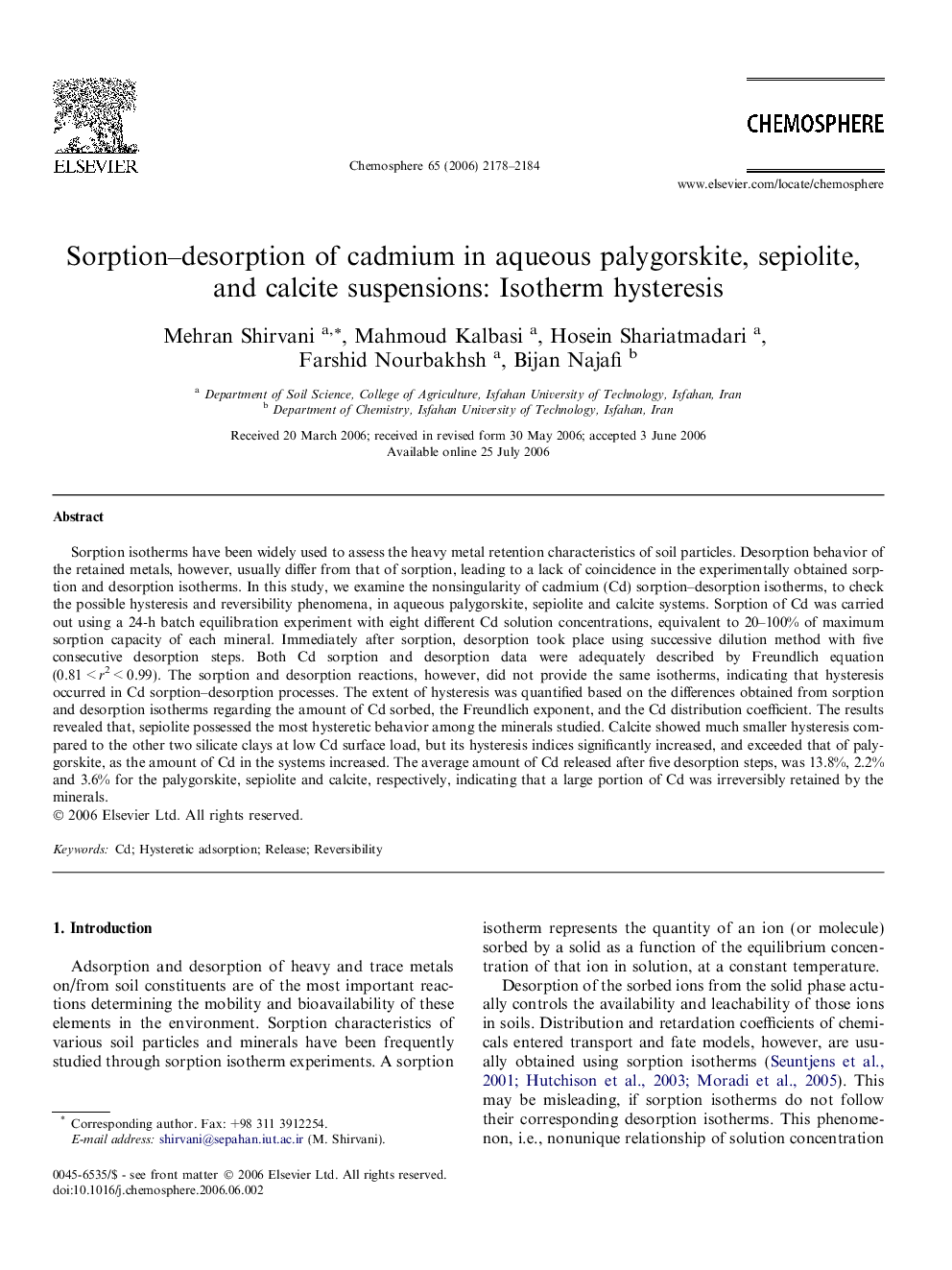| کد مقاله | کد نشریه | سال انتشار | مقاله انگلیسی | نسخه تمام متن |
|---|---|---|---|---|
| 4416038 | 1307767 | 2006 | 7 صفحه PDF | دانلود رایگان |

Sorption isotherms have been widely used to assess the heavy metal retention characteristics of soil particles. Desorption behavior of the retained metals, however, usually differ from that of sorption, leading to a lack of coincidence in the experimentally obtained sorption and desorption isotherms. In this study, we examine the nonsingularity of cadmium (Cd) sorption–desorption isotherms, to check the possible hysteresis and reversibility phenomena, in aqueous palygorskite, sepiolite and calcite systems. Sorption of Cd was carried out using a 24-h batch equilibration experiment with eight different Cd solution concentrations, equivalent to 20–100% of maximum sorption capacity of each mineral. Immediately after sorption, desorption took place using successive dilution method with five consecutive desorption steps. Both Cd sorption and desorption data were adequately described by Freundlich equation (0.81 < r2 < 0.99). The sorption and desorption reactions, however, did not provide the same isotherms, indicating that hysteresis occurred in Cd sorption–desorption processes. The extent of hysteresis was quantified based on the differences obtained from sorption and desorption isotherms regarding the amount of Cd sorbed, the Freundlich exponent, and the Cd distribution coefficient. The results revealed that, sepiolite possessed the most hysteretic behavior among the minerals studied. Calcite showed much smaller hysteresis compared to the other two silicate clays at low Cd surface load, but its hysteresis indices significantly increased, and exceeded that of palygorskite, as the amount of Cd in the systems increased. The average amount of Cd released after five desorption steps, was 13.8%, 2.2% and 3.6% for the palygorskite, sepiolite and calcite, respectively, indicating that a large portion of Cd was irreversibly retained by the minerals.
Journal: Chemosphere - Volume 65, Issue 11, December 2006, Pages 2178–2184